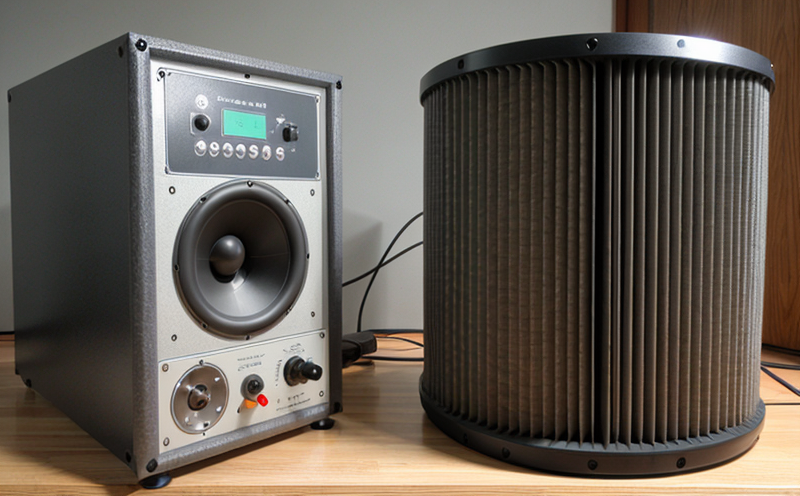ISO 5136 In-Duct Acoustic Testing of Ventilation Systems
The ISO 5136 standard provides a comprehensive framework for in-duct acoustic testing of ventilation systems. This service is crucial for ensuring that the sound levels within ventilated spaces comply with international noise and acoustics regulations, thus maintaining a healthy and comfortable environment for occupants.
Sound can have significant impacts on human health, productivity, and comfort. In environments such as offices, hospitals, and schools, excessive noise can lead to increased stress, decreased concentration, and poor sleep quality. By adhering to the ISO 5136 standard, we ensure that ventilation systems are designed and operated within acceptable sound pressure levels.
The testing process involves measuring sound pressure levels at various points within the ductwork of a ventilation system. This helps in identifying any potential issues with noise propagation or insulation. The equipment used for this test includes calibrated sound level meters connected to microphones positioned strategically throughout the ventilation network.
Once the measurements are taken, they are analyzed against the criteria set forth by ISO 5136. These criteria define acceptable levels of sound pressure and frequency bands within which the system must operate. Compliance with these standards not only ensures regulatory adherence but also enhances the overall acoustic performance of the ventilation system.
Our team of experienced professionals is adept at handling all aspects of this testing process, from initial consultation to final reporting. We provide detailed reports that include raw measurement data, analysis, and recommendations for any necessary adjustments or improvements. This service is particularly valuable in sectors such as healthcare, education, and commercial real estate where noise control is paramount.
To ensure the accuracy and reliability of our results, we use only the most advanced instruments and adhere strictly to ISO 5136 guidelines. This commitment to precision and integrity allows us to deliver accurate measurements that can be relied upon for decision-making purposes.
In summary, ISO 5136 in-duct acoustic testing is an essential service for maintaining a healthy acoustic environment within ventilation systems. By adhering to this standard, we help ensure compliance with international regulations while also enhancing the overall quality of life and productivity in the spaces served by these systems.
Applied Standards
| Standard | Description |
|---|---|
| ISO 5136: Acoustics - Ventilation Systems in Buildings - Determination of Sound Pressure Levels in Ducts | This standard specifies the procedures for determining sound pressure levels at various points within ductwork of ventilation systems. It is particularly useful for identifying noise propagation issues and ensuring compliance with acoustic regulations. |
| ISO 9614: Acoustics - Measurement of Noise in Buildings | This standard provides guidelines on the measurement, analysis, and interpretation of noise levels within buildings. While not specific to ventilation systems, it complements ISO 5136 by offering broader context for acoustic testing. |
| IEC 62492: Acoustics - Ventilation Systems in Buildings - Determination of Noise Transmission from Ducts | This standard focuses on the noise transmission through ductwork, ensuring that the ventilation system does not contribute to excessive noise levels within occupied spaces. It is closely related to ISO 5136 and often used alongside it. |
| ASTM E2807: Acoustics - Ventilation System Noise Control | This American standard provides guidance on reducing noise in ventilation systems, including design considerations and installation practices. It is useful for understanding best practices beyond the strict requirements of ISO 5136. |
Benefits
The benefits of adhering to the ISO 5136 standard are numerous, particularly in environments where noise control is critical. By ensuring that ventilation systems meet these stringent acoustic criteria, we can achieve several key outcomes:
Enhanced occupant comfort and well-being: Reduced noise levels contribute to a more pleasant working environment, leading to increased productivity and satisfaction.
Better energy efficiency: Properly designed ventilation systems that meet acoustic standards often operate more efficiently, reducing both operational costs and environmental impact.
Compliance with international regulations: ISO 5136 ensures that the testing process is consistent with global standards, making it easier to achieve regulatory compliance in diverse markets.
Improved system performance: Regular acoustic testing helps identify any issues early on, allowing for timely maintenance and repair, which in turn extends the lifespan of the ventilation system.
In addition to these direct benefits, there are also indirect advantages such as improved reputation among clients and stakeholders who value sustainable and well-performing facilities. This can lead to long-term business opportunities and customer loyalty.
Competitive Advantage and Market Impact
Advanced instrumentation: We use the latest sound level meters and microphones, ensuring precise measurements that are crucial for accurate results.
Experienced personnel: Our team comprises highly skilled professionals with extensive experience in acoustics testing, providing clients with reliable and insightful reports.
Comprehensive reporting: In addition to raw data, our reports include detailed analyses and recommendations, helping clients make informed decisions about their ventilation systems.
Flexible service offerings: We can tailor our services to meet the specific needs of different sectors, whether it's healthcare, education, or commercial real estate.
By leveraging these competitive advantages, we are able to deliver superior acoustic testing services that set us apart from competitors. Our clients benefit not only from compliance with international standards but also from enhanced performance and longevity of their ventilation systems, which ultimately leads to cost savings and improved operational efficiency.





